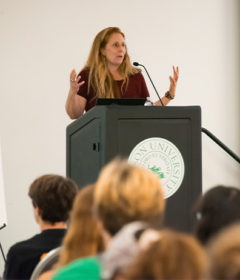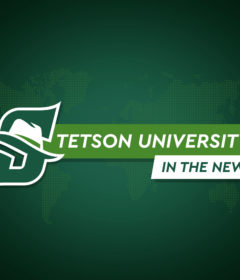‘Why Are They Painting The Grass?!’
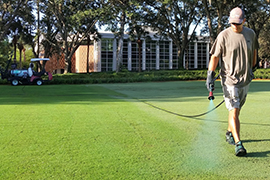
“Why are they painting the grass?!” has become a frequent query among Stetson students when they see the grounds crew spraying a green substance on the grass.
The answer to the question may surprise you.
The grounds crew does spray something on certain high visibility areas, such as the Stetson Green and the Palm Court, but it certainly is not paint. Instead, it is a substance called SARGE, which is a green, UV-blocking pigment. Think of it as a sunscreen mixed with tanning oil, but for plants!
Far from being harmful, SARGE actually lowers the environmental impact of lawn maintenance. As an alternative to pumping the soil full of extra fertilizer and watering the ground profusely, SARGE gives the grass a temporary full green color and helps protect the grass against heat and drought.
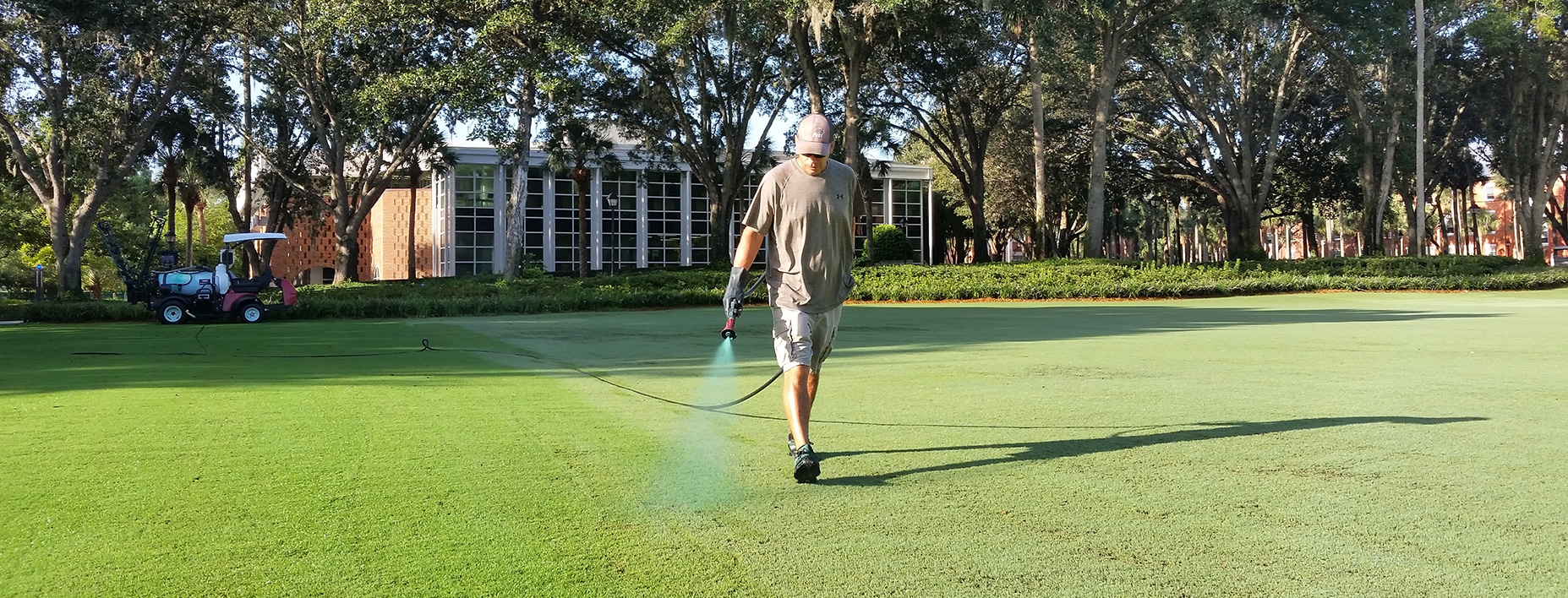
Although SARGE is a helpful tool, the grounds crew still adds fertilizer to the soil around campus to stimulate grass growth. Fertilizer use is a massive problem in Florida, and irresponsible lawn care is thought to be the main cause of the eutrophication (artificial nutrient enrichment) of Florida’s waterways, which leads to algal blooms. Algal blooms are detrimental to both freshwater and saltwater ecosystems, human health and local economies.
The grounds crew at Stetson is well aware of this fact, and they use a guideline called Best Management Practices (BMP) to make sure that the work they do in up-keeping the aesthetics of our campus does not harm the environment. In terms of fertilizer use, BMP prescribes that fertilizers are administered frequently, but in small amounts, so that all the nutrients can be absorbed by the plants. This prevents fertilizer from leeching deep into the soil and into the ground water, and is one of the reasons that we see the grounds crew working so frequently.
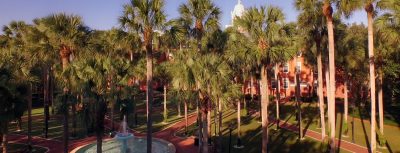
In 2016, Stetson hired a third party to evaluate how well it was performing in terms of using the correct amount of fertilizer. The third party, called Agro Services International, tested two areas on campus, the Palm Court, which is notorious for being highly managed, and the Sandhill Ecosystem behind the Gillespie Museum, which receives no chemical maintenance at all.
The samples from both sides came from 24 inches below the surface level, a depth at which much of the fertilizer would have already been absorbed by common ground-cover plants. Fertilizer is made of three primary components, which plants need to grow: nitrogen, phosphorous and potassium, all of which were measured in the evaluation. As would be expected, the quantities of potassium and phosphorous were both much higher in the Palm Court than in the Sandhill Ecosystem. The concentration of potassium was 58 pounds per acre in the Palm Court and 16 pounds per acre in the Sandhill Ecosystem, and similarly the measure of phosphorous was 241 pounds per acre in the Palm Court as opposed to 94 pounds per acre in the Sandhill Ecosystem. Although the amounts of phosphorous and potassium were about three times higher in the Palm Court than in the Sandhill Ecosystem, according to Agro Services International, both were still in the low-optimum range and were of no cause for concern.
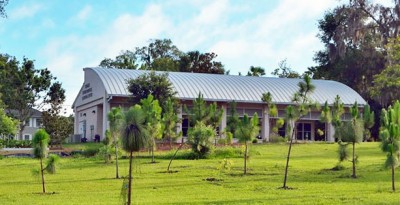
The results from this report also showed that the soil of both the Sandhill Ecosystem and Palm Court contained the exact same amount of nitrogen: 3 pounds per acre to be exact. According to Agro Services International, this is a minuscule amount, and the company actually recommended that Stetson increase the nitrogen in its fertilizer mix.
So, contrary to popular belief, Stetson University is doing well in terms of its fertilizer usage, and its practices are in full accordance with BMP. In addition to fertilizer usage, Best Management Practices also recommends a responsible and benign approach to pesticide usage, known as integrative pest management (IPM).
One of the fundamental components of IPM is the use of preventive measures. This includes keeping the number of pests low so that large amounts of pesticides never have to be applied. Just like with fertilizer usage, IPM recommends that pesticides be used more frequently and in smaller amounts, so that excess chemicals are not released into the environment.
Another key element of IPM is the use of narrow spectrum, or targeted pesticides. Unlike in the past, modern pest control specialists use pesticides that are designed to be lethal to only one or two specific types of pests, and broad spectrum pesticides are almost never used. In addition, the grounds crew at Stetson use organic targeted pesticides whenever possible.
For example, one organic pesticide used by the grounds crew is called Cropmaster Wipeout. This pesticide consists mostly of fish oil with some sesame oil and castor oil, and is targeted to kill scale and soft shell insects. If you have ever smelled something fishy around campus, this is why! The main priority of the Stetson grounds crew is safety, and every single pesticide used on the Stetson grounds is listed by the EPA as General Use. Only two pesticides that Stetson uses are listed as restricted, and they are only used on the sports fields by the Athletic Training Center (ATC) in specific circumstances.
Although many students might not realize it, the Stetson grounds crew is a modern and responsible team focused first on safety and second on the maintenance and beautification of Stetson’s campus. Although no chemical use is ideal, modern standards of aesthetics are integral to tuition-supported universities like Stetson and must be upheld for the school to continue to run.
So, next time, when you pass by a member of the grounds crew who has politely stopped his or her leaf blower for you, why not thank them for all the hard work they do, making Stetson the cleanest and most charming university around.
-Stetson Facilities Management


